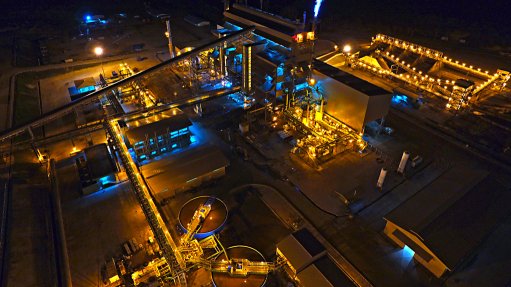
INDUSTRY UPLIFTMENT The efficient delivery of a safely executed and on-time project is key to the upliftment of the industry
Delivering well-executed projects at a low capital cost is key to continuous improvement within the local and global mining industry, and Sandton-based process and engineering services provider Metix attributes its ongoing success to its ability to do so for large projects on an engineering, procurement and construction (EPC) or lump sum turnkey basis.
Metix projects director Wynand Moolman adds that the company – a subsidiary of German privately owned SMS Group – has also managed to complete EPC management or cost-plus format-based projects in mining, which depend on client preferences.
He explains that, as there are not many new mining projects in South Africa, there are not many project management opportunities in the industry, but he emphasises that the efficient delivery of safely executed and on-time projects is imperative to the upliftment of the industry.
To reduce construction time and risks on site, Metix has introduced two key strategies – Building Information Modelling (BIM) and Design for Construction (D4C) – in the last few years, which guide Metix’s execution of projects, he notes.
BIM, Moolman explains to Mining Weekly, is an intelligent, three-dimensional, model-based process that provides architecture, engineering and construction professionals with the insight and tools to efficiently plan, design, construct and manage an entire project by ensuring that all its stakeholders are working with the most relevant information.
This, he adds, complements the D4C philosophy of designing with constructability in mind, thereby decreasing construction time and risks during a project.
Project Portfolio
Moolman enthuses that Metix completed the EPC of a greenfield ferromanganese and silicomanganese smelter, on the island of Borneo, in east Malaysia, in the third quarter of 2016.
“The core furnace technology was supplied by Metix, while the gas-cleaning technology was supplied by our parent company SMS Group and installed in 2015 for the first time on a submerged arc furnace.”
The gas-cleaning plant is an adjustable double Venturi scrubber with “superb efficiencies resulting in emissions well below the requirements of authorities worldwide”. It can deliver higher furnace availability and lower off-gas emissions than many of the current technologies employed in South Africa, says Moolman.
More efficient scrubbing not only ensures better environmental compliance but also makes the energy-rich off-gas better suited for downstream use, Moolman notes.
Using this wet scrubbing technology for closed submerged arc furnaces removes the particulates from the gas stream, thereby leaving carbon monoxide gas that is suitable for heating or power- generation applications, he says.
Moolman further explains that each furnace’s gas-cleaning plant has two gas-cleaning lines that can be safely switched between the two lines using the networked data communications and supervisory control and data acquisition interface.
This, he concludes, ensures that the gas-cleaning plant contributes minimally to furnace downtime, as the ease of switching between the duty and standby line ensures that there is always gas-cleaning capacity available.